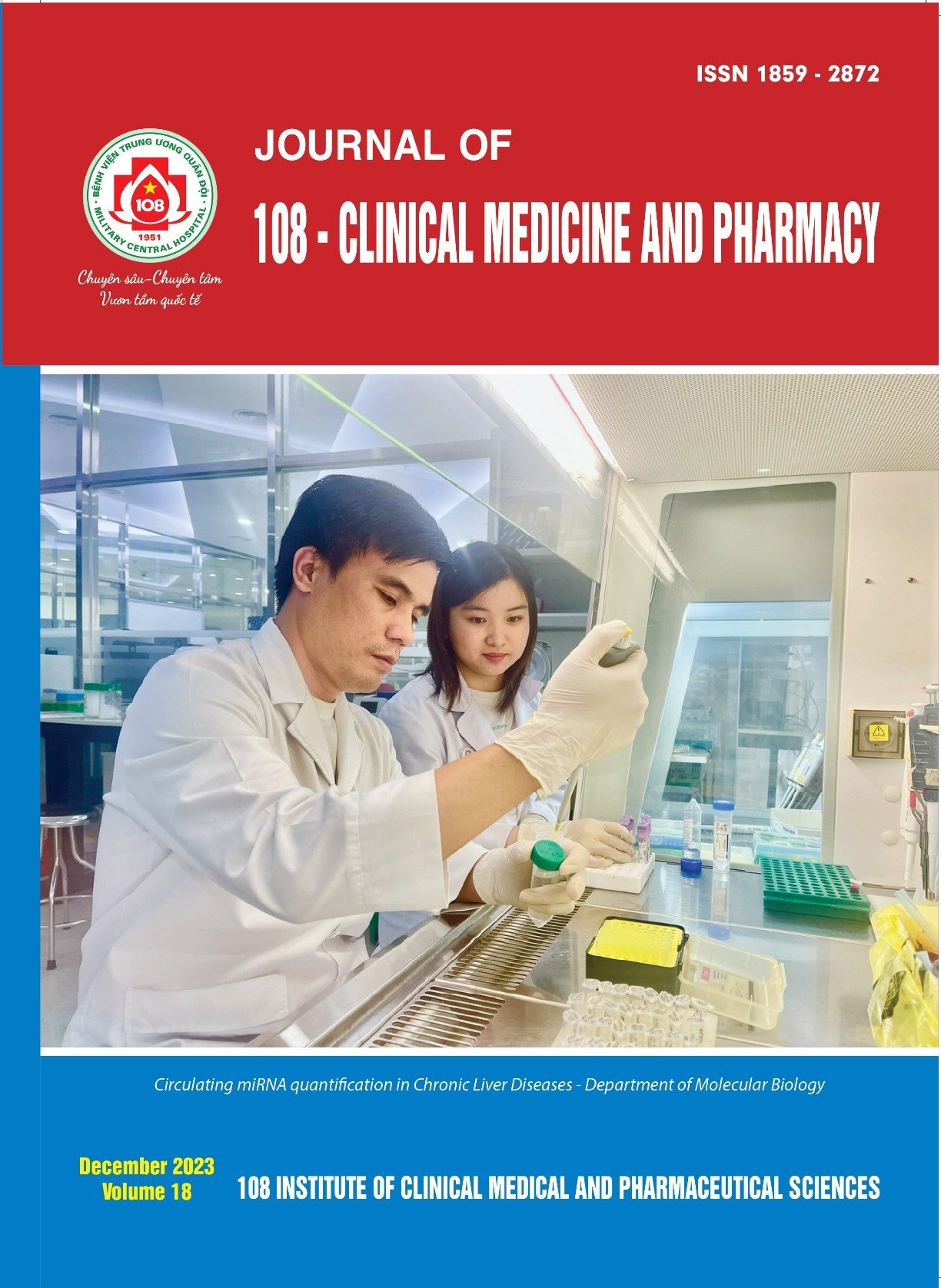Transcarotid thoracic endovascular aortic repair for rupture of the aortic isthmus due to high energy blunt trauma: A case report
Main Article Content
Keywords
Tóm tắt
Introduction: Blunt thoracic aortic injury (BTAI) is associated with very high mortality, and managing currently favors thoracic endovascular aneurysm repair (TEVAR) if feasible, especially BTAI due to high energy force, where patients usually suffer from polytrauma, which requires rapid discover and treat spontaneously. However, a remarkable group of patients is contraindicated for the transfemoral route- the established first-line approach in endovascular interventions of the aorta. Here, we report a successful case in which the carotid artery was used to perform TEVAR. Case presentation: A young female was transferred to our emergency department after injuries sustained by falling from the fifth floor. Her vital signs were stable on admission. Pan CT scan revealed multiple injuries: A grade III injury of the aortic isthmus, a grade III liver injury without active bleeding, and fracture of the sternum, multiple ribs, T12-L1 vertebral body, and pelvic ring. However, her hemodynamics became unstable, and we decided to perform an urgent endovascular repair. During preparations for TEVAR, we found that the diameter at the proximal landing zone was 17.1mm, so it cannot be accommodated by any of the available thoracic endograft devices. Under the emergency condition, we decide to perform TEVAR by abdominal aortic device and access via the carotid to suit the device's length. After inpatient rehabilitation, she was discharged without neurologic sequelae. Conclusion: Transcarotid TEVAR is feasible and could be considered as an alternative approach in some specific patients with BTAI.
Article Details
Các tài liệu tham khảo
2. Cheng YT, Cheng CT, Wang SY, Wu VC, Chu PH, Chou AH et al (2019) Long-term Outcomes of Endovascular and Open Repair for Traumatic Thoracic Aortic Injury. JAMA Netw Open 2(2): 187-197.
3. DuBose JJ, Leake SS, Brenner M, Pasley J, O'Callaghan T, Luo-Owen X et al (2015) Contemporary management and outcomes of blunt thoracic aortic injury: a multicenter retrospective study. J Trauma Acute Care Surg 78(2): 360-369.
4. Fox N, Schwartz D, Salazar JH, Haut ER, Dahm P, Black JH et al (2015) Evaluation and management of blunt traumatic aortic injury: A practice management guideline from the Eastern Association for the Surgery of Trauma. J Trauma Acute Care Surg 78(1): 136-146.
5. Kato N, Dake MD, Miller DC, Semba CP, Mitchell RS, Razavi MK et al (2017) Traumatic thoracic aortic aneurysm: Treatment with endovascular stent-grafts. Radiology 205(3): 657-662.
6. Lee WA, Matsumura JS, Mitchell RS, Farber MA, Greenberg RK, Azizzadeh A et al (2011) Endovascular repair of traumatic thoracic aortic injury: Clinical practice guidelines of the Society for Vascular Surgery. J Vasc Surg 53(1): 187-192.
7. Murad MH, Rizvi AZ, Malgor R, Carey J, Alkatib AA, Erwin PJ et al (2011) Comparative effectiveness of the treatments for thoracic aortic transection. J Vasc Surg 53(1): 193-199.
8. Sevitt S (1997) The mechanisms of traumatic rupture of the thoracic aorta. Br J Surg 64(3): 166-173.
9. Wada D, Hayakawa K, Kanayama S, Maruyama S, Iwamura H, Miyama N et al (2017) A case of blunt thoracic aortic injury requiring ECMO for acute malperfusion before TEVAR. Scand J Trauma Resusc Emerg Med 25(1): 110.
 ISSN: 1859 - 2872
ISSN: 1859 - 2872
